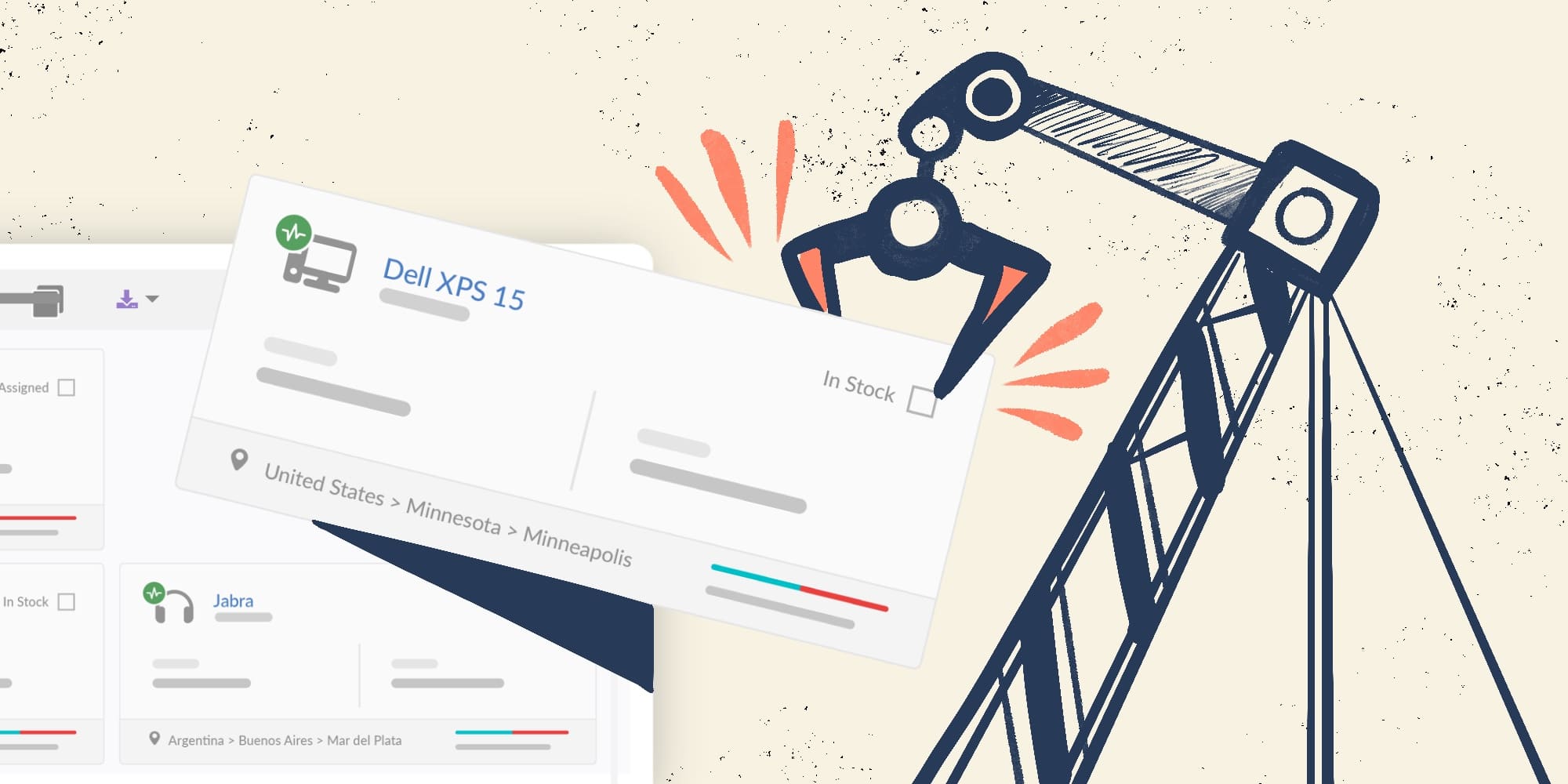Smooth offboarding and efficient laptop returns are crucial steps for businesses, not only for operational efficiency but also for maintaining security. An effective offboarding process ensures company devices are returned promptly and securely, protecting data and preserving equipment for future use.
The stakes are high: missed steps or mismanaged returns can leave sensitive data vulnerable and strain your resources when IT assets go unaccounted for.
Here’s a comprehensive guide to streamline laptop returns, mitigate risks, and adopt best practices for handling recovered devices.
Getting equipment back from terminated employees
When it comes to offboarding, missed steps can cause real issues for companies. In a survey conducted by Capterra, HR professionals reported that 86% of employees skipped their exit interviews, and 71% did not return company-owned equipment, such as laptops or smartphones. These missed returns cause extra costs and, moreover, can create cybersecurity risks.
So, what can companies do to make sure employees understand their responsibilities and return all equipment before they leave? Here are a few straightforward ways to improve the equipment return process.
Strategies to streamline laptop returns during offboarding
Each step of the offboarding process should be tailored to retrieve hardware efficiently while safeguarding sensitive information. Here are strategies to improve your workflow:
1. Establish a standardized offboarding process
A structured checklist prevents critical steps from falling through the cracks. Your checklist should include steps to:
- Revoke system access and deactivate employee accounts
- Issue reminders for laptop and other asset returns
- Schedule equipment return appointments or provide return instructions
You can automate this process with a workflow on InvGate Service Management. You’ll be able to track which steps are complete and where follow-ups are needed, ensuring no steps are skipped. And, of course, you’ll repeat the same protocol whenever an employee leaves the company.
2. Automate communication for asset recovery
Communication is essential for timely device returns. When an employee leaves, automated notifications and reminders can prompt them to return their laptop. Automated messaging can be integrated into:
- Exit interviews and final days: A digital offboarding tool can send return reminders ahead of an employee’s last day, making the process clear.
- Follow-up messages: After an employee’s departure, automated follow-ups can ensure equipment is returned without relying on manual reminders.
3. Use clear policies to guide the process
Having a clear return policy in place—covering timing, procedure, and expectations—helps employees understand their responsibilities. For instance, companies often set deadlines for returning devices and specify consequences for non-compliance.
When policies are communicated effectively, employees are more likely to comply, which reduces the need for follow-ups and improves accountability.

Why automate offboarding?
The offboarding process involves many steps, from revoking system access to recovering the physical assets. Manually handling this process can lead to human error, delays, and inconsistencies that can impact security and resource management.
So, as we mentioned before, using automation for the employee offboarding process is a great strategy because it solves many of these challenges with clear, repeatable workflows to complete all steps. Here are some key reasons automation benefits the offboarding process:
- Reduced security risks: Automated systems can quickly revoke access, reset passwords, and notify relevant teams of device retrieval tasks.
- Efficient asset recovery: Automation tracks and prompts asset return steps, helping you manage equipment like laptops without delay.
- Consistency across departments: Workflows keep processes uniform across departments, avoiding lapses that can leave equipment unaccounted for.
Still not convinced of how important it is to define and enforce a complete offboarding process? Let’s explore the specific risks of skipping steps.

The risks of missed steps in offboarding
Leaving even one step out of the offboarding checklist can expose the organization to significant risks. Here’s a breakdown of what’s at stake:
1. Security concerns
Uncollected laptops often contain sensitive data, making it vital to retrieve and secure these devices promptly. When employees leave without returning devices, companies face two main risks:
- Data exposure: Corporate data on unreturned laptops remains accessible, posing a risk if the device is lost, sold, or stolen.
- Unauthorized access: Without an effective offboarding process, former employees could retain login access to systems and applications, leading to potential data breaches.
2. Asset Management challenges
Laptops are valuable resources, and uncollected devices can disrupt Asset Management efforts. Over time, lost assets lead to increased costs and inefficiencies, as IT teams may need to procure additional equipment.
- Inventory discrepancies: Missing laptops create inventory gaps, hindering accurate tracking and planning.
- Resource allocation: New hires may lack available devices if equipment from former employees is not promptly recovered and reset for reuse.
3. Compliance issues
Data security regulations, such as GDPR and HIPAA, require organizations to protect sensitive data, including enforcing strict controls on who has access. Poorly managed offboarding increases the risk of non-compliance, leading to potential fines or reputational damage.
With these risks in mind, an automated offboarding process offers a reliable way to keep equipment and data secure. However, recovering a laptop isn’t the final step of the asset lifecycle. Let’s explore more about what to do after the equipment is back in your hands in the following sections.

Perform security protocols on returned devices
Getting a laptop back was just the beginning. Once the equipment is in hand, it’s essential to secure the data and prepare the device for its next use. Skipping these steps can put sensitive company data at risk. To prevent that, companies typically perform a series of security protocols on all returned devices:
- Data erasure: Certified data-wiping tools are used to completely clear the laptop of any company information, ensuring that sensitive data isn’t accessible.
- Hardware checks: A quick inspection confirms that the device is fully intact, with no damage or missing components. This step is especially useful if the device is being passed on to a new employee.
- Reimaging and reconfiguration: The laptop’s operating system is reset, and settings are adjusted to suit the needs of the next user. Custom configurations based on role requirements can be added here to speed up onboarding for the next employee.
You can use InvGate Asset Management for this step! IT teams can flag devices for inspection, initiate data wipes, and schedule reconfiguration.
This saves time and ensures that each step is completed thoroughly, allowing laptops to be returned to circulation without risking data security.

What do most corporations do with returned computers?
After a laptop is recovered, companies have several options for reusing or disposing of it. Here are the most common choices corporations make:
1. Reallocate to new employees
Returning laptops to circulation is often the most efficient option, especially if the devices are in good condition. Companies save on costs by reassigning returned laptops to new hires or contractors, especially when using a systematic approach to refresh or update configurations.
2. Refurbish and donate
Some organizations refurbish older laptops and donate them to educational institutions or non-profit organizations. This option not only provides value to the community but also aligns with corporate social responsibility (CSR) goals. Be sure to follow strict data-wiping processes to ensure all sensitive information is completely removed before donating.
3. Recycle responsibly
Recycling is an environmentally responsible choice for laptops that are too old or damaged to reuse. Many organizations partner with certified e-waste recyclers to dispose of old devices, ensuring that hazardous materials are handled safely.
Recycling helps minimize environmental impact and often fulfills regulatory requirements for electronic waste disposal. It's a great step towards incorporating sustainable IT practices into your organization.
4. Sell or trade-in
When organizations choose to upgrade hardware, some find that selling or trading in older models helps offset the costs of new equipment. Many electronics resellers and recycling programs offer buy-back or trade-in options for corporate clients, providing a practical way to recover value from returned devices.
Each approach has its benefits, and the decision often depends on the organization’s goals, the condition of the returned laptops, and security policies.

Final thoughts
Wrapping up the offboarding process effectively goes beyond simply getting a laptop back in hand. Automating this stage of an employee’s transition can minimize the risks involved, keep data secure, and simplify equipment management. But, as we’ve explored, there’s more to it than just retrieving a device: you need a thoughtful plan for data handling, hardware checks, and device reconfiguration.
For companies looking to keep their offboarding efficient and secure, each of these steps matters. A well-planned process not only protects the organization but also reflects a company’s commitment to both security and effective resource use.
Hopefully, these steps make the task of managing equipment returns and data security a little less of a hassle — and help keep things running smoothly, no matter how many devices come and go.
Are you ready to start streamlining your operations with InvGate? Check out all you can do with our 30-day free trial!















